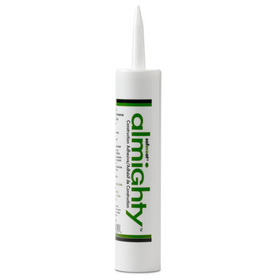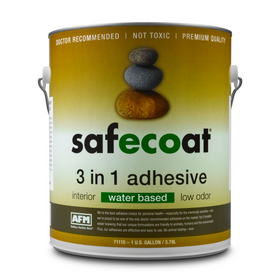
Is LEED Certification Worth It for Your Home?
Last Updated: Feb 11, 2025The borough of Westboro, a neighborhood along the west end of Ottawa, Ontario, lies along the Ottawa River, with its soft sand beach and spectacular sunsets. In the early 1800s, the area was a rural farming community. After sawmills opened in the 1870s, drawn by the area’s stately oak trees, the community grew, and workers, residents, and businesses moved in.
In 1900, an electric trolley provided easy access to downtown. After several more transitions, Westboro went through significant gentrification in the early 2000s, sparked in part by the arrival of the popular Canadian outdoor sports and recreation store, Mountain Equipment Co-op (MEC). Today, the neighborhood is a thriving community with a lively street scene lined with an array of restaurants, retail stores, beaches, parks, and access to water activities.
Nadine Martel lived with her husband and children in another area of Ottawa, also close to the river, a beach, and parks. But, the family started outgrowing their home. The kids, now teenagers, were suddenly too far from their high school, and Martel’s husband’s new job wasn’t reachable via mass transit. It was time to move.
Martel discovered Westboro and fell in love. The neighborhood also was close to the river and had beaches, with lots of cafes and shopping within walking distance. She found a house on Kirchoffer Avenue for sale, with a great view of the beach and sunsets. “The location was ideal,” she says. The place: not so much. “It was a standard plan house just plopped down on the site. It didn’t take full advantage of the lot and its views.
Table of Contents
- Passive House vs. LEED
- No Stone Unturned
- Will Solar Come Next?

She also realized the house would need renovations to meet the family’s needs, “so we began talking with LEED consultants to see what could be done.” The family sorted through various options, including renovating and another alternative that included tearing down the house but keeping the foundation. In the end, the family decided to build new, making the new home “as environmentally friendly as possible.” The result is the family’s LEED Platinum-certified home, a pioneering work of sustainable design and construction.

Passive House vs. LEED
The next-door neighbor had designed the original home. Because a large part of the property was restricted to remain an open amenity area, with restrictions on how close construction could occur next to the property line, the house had high diagonal volumes in the back.
Martel considered Passive House construction. A management consultant and project manager, Martel has advised on LEED and other government energy efficiency programs and operations and managed sustainability audits. Moreover, she’d supervised the family’s other home renovations in the past. “I’m always looking for the most environmentally-friendly option,” she says. “I like researching to see what’s out there. [There’s] so much coming up these days regarding new sustainable technologies and new ways of thinking. I’m quite passionate about sustainability.”
She found the LEED process, however, more encompassing than the Passive House methodology. “Passive House also would have been more complicated because of the footprint we were allotted,” she adds. Moreover, she realized LEED “would help guarantee the workmanship because there are checkpoints along the way.
“Our builder, The Lake Partnership, was amazing,” she continues, “They care about the work they do and are safety conscious. I didn’t necessarily need the verification that LEED provides. But for other homeowners not so familiar with their builder, that LEED verification process can offer extra peace of mind.”
Working with her LEED consultant and an architect at Linebox, Martel outlined her main goals: To take full advantage of the location and its views, make sure the design of the house fit into the existing neighborhood, ensure there was a lovely open plan and space for the grand piano, and fulfill the family’s sustainability goals.

No Stone Unturned
The home was completed in February 2018. It has one level at the front, “to make sure it’s not a massive presence on the street and fits into the neighborhood,” Martel says, with the house opening up to two levels at the back. They sited the home to use natural ventilation that works with prevailing wind directions and passive solar heating. A four-season lounge opens up to a deck and pool, a deck fire pit beyond bi-fold doors, and a roof deck with a hot tub and stunning river views.
Building Materials
Shop high-performance building materials that are vetted for benefits to your health, your pocketbook, and the planet.

AFM Safecoat Almighty Adhesive Case of 12
AFM Safecoat
In Stock

AFM Safecoat 3 in 1 Adhesive
AFM Safecoat
In Stock

Quickscrews Cabinet Install Screws
Quickscrews
In Stock

AutoSlide Automatic Sliding Door System
Autoslide
Out of Stock
2 Colors

Autoslide Smart Tag Pet Door Kit
Autoslide
Out of Stock
2 Colors

AutoSlide Elite iLock Smart Tag Pet Door System
Autoslide
Out of Stock
2 Colors

Quickscrews Pan Head Pocket Hole Screws
Quickscrews
In Stock

Autoslide Elite Smart Tag Pet Door Kit
Autoslide
Out of Stock
2 Colors

Autoslide Motion Activated Pet Door System
Autoslide
Out of Stock
2 Colors

Quickscrews Square Flat Head Wood and Particle Board Screws
Quickscrews
In Stock

Conscious Product Selection
The home utilized FSC lumber for all framing, sheathing, doors, trim, and millwork. Brick, cement, doors, pavers, millwork, and the triple pane Energy Star windows came from local producers and manufacturers. Much of the decking, millwork, brick, and tiles included recycled content.

Heating, Cooling, and Ventilation
The energy systems include a cold climate, air-source heat pump, an ERV, and skylights with venting. The home utilizes an efficient domestic hot water tank and hot water recovery system.
As a result of all these measures, the home produces “65 percent fewer greenhouse gases than similar-sized homes built to minimum building code requirements,” Martel says.

The family splurged on river oak flooring fabricated from 350-year-old oaks preserved in the Ottawa River for 200 years inside the home. They chose a wood bar table constructed from ash wood cut down during an emerald ash borer infestation. The family opted not to include a fireplace to comply with best practice combustion venting measures. The ERV system provides enhanced outdoor air ventilation and assists in managing humidity. Bathroom fans have timers. “The house has been verified for good air filtering, radon protection, contaminant control, and garage pollution protection,” Martel says.

Before the demolition of the former house, the family donated $17,500 in doors, windows, appliances, cabinetry, and hardware to Habitat for Humanity. During demolition, they were able to divert 90 percent of the construction waste from landfills for recycling. “Our sustainability goals included making sure we weren’t leaving any stones unturned,” Martel says. “We looked at all options, including the financial aspects.”

Will Solar Come Next?
Even though the family uses an electric car, has an electric vehicle charging station in the garage, and has an all-electric house, they opted out of solar power. “It didn’t make financial sense at the time,” Martel says, “but we’re revisiting it now. The home is solar-ready (i.e., we have conduits that were wired in to connect to solar panels, should we decide to install these at a future time). Instead, we decided to invest in the local renewable energy co-op (OREC), as well as Bullfrog Power our home.” (Bullfrog Power offers homeowners the ability to sign up for “green” energy—powered by wind or water. Packages start at $21.25 per month to offset 850-kilowatt hours and support the development of new, community-based projects across Canada.)
The family is installing energy monitors “to keep track of what we thought we’d use, and what we’re using,” Martel adds. Nevertheless, in March, the family received notification that their home had achieved LEED platinum certification.
“We’re so happy with our decision to build a sustainable home here,” Martel says.
We’re pleased with every decision we made.
Camille LeFevre
Camille LeFevre is an architecture and design writer based in the Twin Cities.


